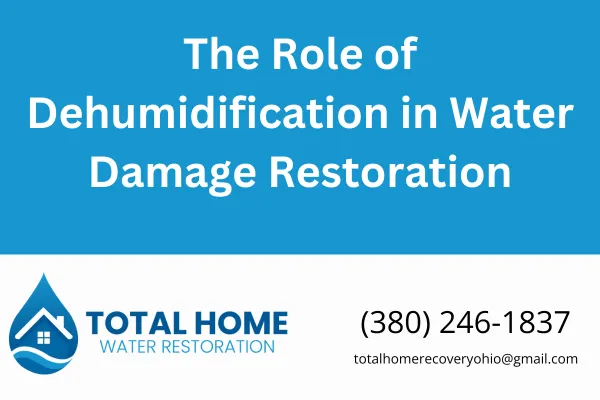
The Role of Dehumidification in Water Damage Restoration
The Role of Dehumidification in Water Damage Restoration
When your home suffers water damage—whether from a burst pipe, heavy rain, or a backed-up sump pump—getting it dry fast is the most important step. One of the most effective tools we use at Total Home Water Restoration is professional-grade dehumidification. Here’s why it matters—and what you should expect.
Why Dehumidification Matters
When water enters your home, it soaks into everything: drywall, insulation, flooring, and subfloors. Even after visible water is removed, moisture remains trapped in materials and the air. That’s where dehumidifiers come in.
Dehumidification does a few critical things:
Pulls moisture from the air to lower humidity
Helps dry out materials like wood, drywall, and carpet
Prevents mold growth, which can begin within 24–48 hours
Protects structural integrity by stopping swelling, warping, and rot
If your restoration contractor skips this step—or uses the wrong type of equipment—you’re likely to end up with long-term problems.
The Science Behind It
We follow IICRC S500 standards for water damage restoration, which lay out clear requirements for proper drying and humidity control.
Here’s how we do it:
Measure humidity with moisture meters and hygrometers
Set up dehumidifiers matched to the size of the affected area
Monitor daily to ensure proper drying
Adjust placement and airflow as conditions change
We typically use low-grain refrigerant (LGR) dehumidifiers, which are designed for severe water losses and work even when humidity is already low. In some cases, we may use desiccant dehumidifiers for large or cool spaces like basements.
What You’ll See in Your Home
If we’re drying your home, you’ll notice:
Hoses or ductwork running from dehumidifiers
Air movers working alongside to circulate dry air
Humidity levels dropping steadily over 2–5 days (or more, depending on the damage)
You might not be able to see moisture trapped in materials, but we track it behind the scenes. We don’t stop until our moisture readings confirm your home is truly dry.
When It’s Done Right
When dehumidification is done correctly:
Your drywall stays intact
Wood floors and trim don’t buckle or separate
Mold doesn’t take hold
You avoid having to tear out and replace building materials
When it’s rushed or skipped, the opposite happens—and unfortunately, we see it all the time.
A Real Example from Grove City
One homeowner called us a week after another company left their finished basement "dry." The smell was terrible. Turns out, they hadn’t used a single dehumidifier—just fans. Moisture had wicked up the walls and soaked the carpet pad.
We had to:
Tear out drywall up to 2 feet
Remove and replace the carpet pad
Deodorize and treat the space for mold
All of that could have been avoided with three days of proper dehumidification.
What You Should Ask Your Contractor
Don’t assume your restoration crew is handling dehumidification properly. Ask:
What type of dehumidifiers are you using?
How do you know when it’s fully dry?
Can I see the moisture readings?
If they can’t answer clearly—or won’t show you data—it’s a red flag.
Your Local Experts for Water Damage Restoration
At Total Home Water Restoration, we treat your home like it’s our own. That means we:
Follow IICRC standards
Use professional-grade drying equipment
Keep you in the loop the whole way
If you’ve had water damage in Grove City, Columbus, or surrounding areas like Hilliard, Dublin, Pickerington, or Westerville, give us a call. We’re here to get your home back to normal—dry, safe, and mold-free.
📍 Address: 4141 Hoover Rd, Grove City, OH 43123
📞 Phone: 380-246-1837
FAQ
How long does it take to dry a house after water damage?
It usually takes 3–5 days, but it depends on how deep the water went and how quickly we respond. We monitor moisture levels daily.
Can I just open windows and use fans?
Not recommended. That might help in dry weather, but you’ll never remove deep moisture from walls, floors, and hidden spaces without dehumidifiers.
What happens if I don’t dehumidify after a leak?
Mold, warped flooring, soft drywall, and long-term odors. It’s not worth the risk.
